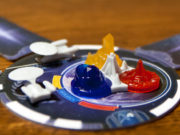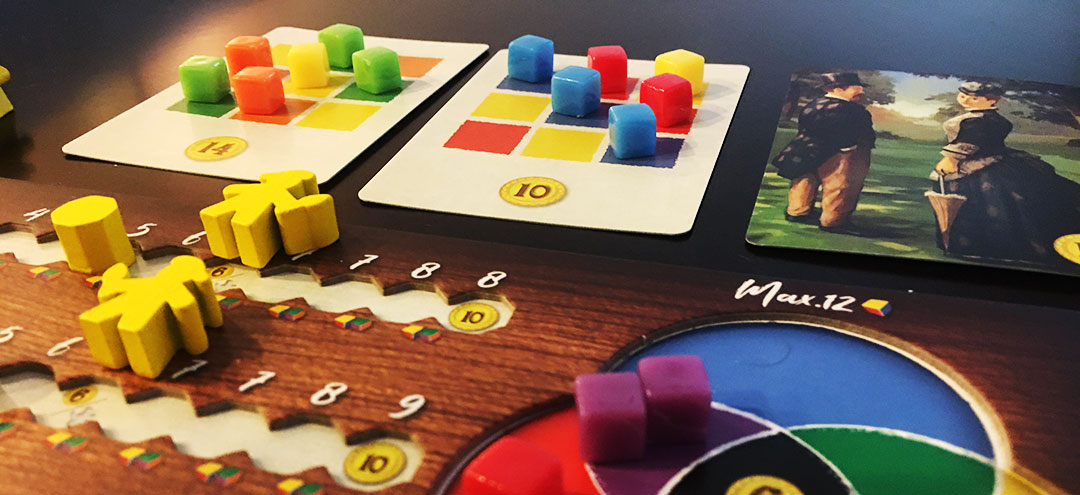 The Impressionists were the punk rockers of the French art scene at the end of the 19th century. Not content with the religious iconography and historical portraiture of the day, these rogues wanted to break new ground with radical takes on landscapes and still lifes. However, those radicals with storied names like Cezanne, Degas, and Monet knew they were simply ahead of the curve and knew the public would eventually catch up to their genius. Who knew pictures of water lilies could be so controversial?
The Impressionists were the punk rockers of the French art scene at the end of the 19th century. Not content with the religious iconography and historical portraiture of the day, these rogues wanted to break new ground with radical takes on landscapes and still lifes. However, those radicals with storied names like Cezanne, Degas, and Monet knew they were simply ahead of the curve and knew the public would eventually catch up to their genius. Who knew pictures of water lilies could be so controversial?
In Colors of Paris, you are a painter trying to stack up with the greatest painters of the age by creating your own masterpieces. Does Colors of Paris have the finesse to deliver precise brush strokes, or does this canvas end up looking like a 3-year-old finger painting? That is for the jury to decide!
Colors of Paris is a worker-placement rondel game for 2-4 players. We recommend only playing this game with 3-4 players.
Gameplay Overview:
In Colors of Paris, you are a painter trying to make your name by creating stunning works of art. On a player’s turn, they will place a worker onto the rondel, activating the actions of acquiring paints, blending paints, adding paint to their canvas, and improving tools to increase the number of paints they can work with each turn. Each action space on the rondel corresponds to a specific color or blend and depending on where the action space is based on the rondel’s position allows one, two or three workers to activate that space on a particular turn. Players can also place a worker to become the first player, to copy another worker, or to have control over how the rondel rotates at the end of the round.
Each painting has nine squares of color that need to be painted in order for the painting to be complete, with the painting having a point value dependent on the number and complexity of the colors in the painting. Players can substitute up to three white pigments cubes for the requisite color, but with a penalty in scoring. Players can earn bonus workers and points by improving their tools past set thresholds. The game ends when a player paints three paintings, at which point the scores are totaled and the artist with the most points is declared the winner.
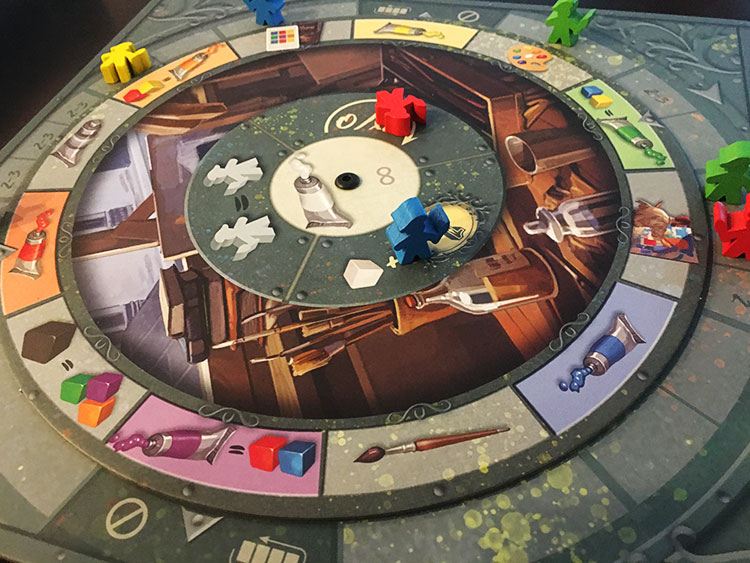
Game Experience:
We love a good worker placement game, and Colors of Paris gives some nice variations to what could normally be a pretty standard game mechanic. The addition of the rondel introduces a double helping of complexity in being able to keep track of which actions will rotate in and out of availability on the following turn, and in knowing which worker to keep on the board to carry over to the next round. Making a player choose between playing a worker in a beneficial action on the current turn and a not-as-helpful-now-but-game-changing-next-turn layers tension into what can normally be a pretty predictable mechanism.
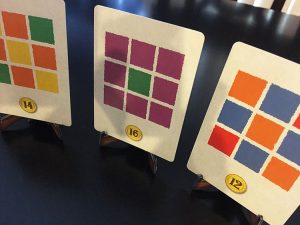
We will admit that we are suckers for the theme, especially the color-mixing mechanic. It could very well be that it harkens back to our elementary art lessons or longing for quiet strolls through the Philadelphia Art Museum or the Met. Either way, we found that the theme really shines through in the gameplay, with acquiring pigments, mixing colors, and putting paint to canvas all expressed well through the gameplay. We enjoyed being able to use white pigments as a color substitute with a penalty, simulating the dulling of colors when mixing. While we would have preferred a multitude of paintings on the card backs, we understand the cost issues as it relates to game art, so we were willing to overlook it.
An issue we repeatedly observed was the lack of a catch-up mechanic in Colors of Paris. Players who were able to jump out to an early lead in terms of progress on their paintings more often than not were able to keep that lead. Whether because of the initial array of available paintings, an optimal turn of the rondel, or how the turn order unfolded, it seemed that the player with the initial separation maintained it. This was only compounded by the rather abrupt end of the game when one player scores three paintings. We would like to have seen a variant or an option where an additional round is played after that game-end condition, giving some players the opportunity to try and gain some ground on the leader.
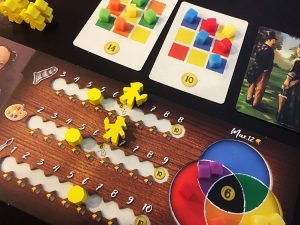
In our first plays of Colors of Paris, we had a full player count, which led to fierce competition for action spaces, especially when a particularly important action only had occupancy for one player. The decisions as to how to rotate the board at the end of the round, when to become first player, and how to plan for the following turn all took on significance. We were extremely let down when we played our first two-player game, as all of that planning and importance disappeared. Gameplay, while quick, became extremely boring and repetitive; all the tension that made Colors of Paris so enjoyable evaporated. Be wary of this if you are primarily a two-player household.

We especially enjoyed the so-called “advanced rules” that were included in the box. The bonus cards allow players to activate powers at the cost of white pigments, making them more attractive of a choice during action selection. The painter tiles give a unique power to every player, usually allowing them to take a bonus action when selecting a specific action. We found these painter powers to be extremely interesting, providing a little more strategy to decisions such as selecting paintings and timing of particular actions. The best thing about both of these modules is that they add seamlessly into the game, without much disruption to the base rules, which is always welcome. After we introduced the bonus cards and painter tiles to the game, we would not ever deem it necessary to go back to playing without them; experienced gamers should feel free to integrate them right from jump.
A quick, but important, note on representation. During our first play, we made mention that we were surprised that none of the notable women artists of the Impressionism movement were included in the game. We were told that the designers had done their research and that none were found. If this is the case, the designers need to do better.
Final Thoughts:
Colors of Paris provides a nice spin on what could be a run-of-the-mill worker placement game. Definitely worth checking out, so long as you are playing with more than two players.
Final Score: 3 Stars: Colors of Paris blends some interesting mechanics and theme, but the picture it paints might not be a true work of art.
 Hits:
Hits:
• Rondel and worker placement mechanics provide strategic depth
• Fun expression of theme
• High-quality game art and components
Misses:
• Only good with 3-4 players
• Game rewards the early leader with almost-assured victory
• Lack of representation of the very notable women artists




